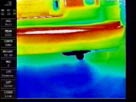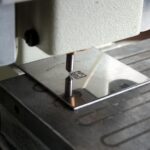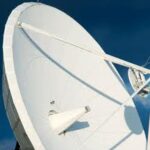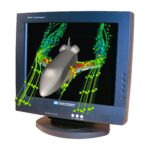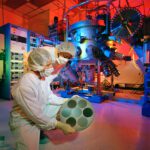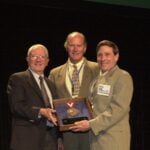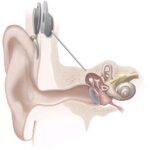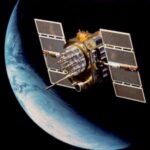Space Technology Hall of Fame Inductees
The Space Technology Hall of Fame® comprises many extraordinary innovations — all derived from or significantly improved by space research or exploration. To nominate a technology, please visit our Nominate a Technology page to learn more about the Space Technology Hall of Fame® selection criteria.
Search Filters:
Understanding climate changes and the parameters influencing the climate is very important. Infrared imaging is an important technology for gathering useful information however, prior to 1990, no photo-detector arrays had been fabricated that would operate at infrared wavelengths necessary for detecting these changes in ecosystems. In a unique collaboration between the Goddard Space Flight Center,…
Read MoreProduct identification technology pioneered by NASA for tracking Space Shuttle parts is being used to mark everything from groceries to automobile parts.The application of compressed symbology, a two-dimensional symbol marking system to parts marking was developed at the Marshall Space Flight Center for the Space Shuttle Program, where millions and millions of parts, some as…
Read MoreIn a large urban area there may be as many as 100 AM and FM radio stations on the air. However, most broadcasts are replete with commercials and sometimes even within the urban area broadcast reception may be poor and if you drive out of the urban area reception is lost. Space technology provided an…
Read MoreUsing photo-refractive optics technology and experience developed in the Landsat and Skylab Space Telescope programs, NASA Marshall Space Flight Center innovators created an apparatus for detecting human eye defects. The innovators found that different eye abnormalities and diseases cause the eyes to reflect light in distinctly different ways. Vision Research Corporation integrated the technology into…
Read MoreNASA is always seeking ways to enhance its understanding of great masses of data, such as fluid flow around air- and space-craft surfaces. Visual 3-D representations are particularly useful to analyze such data. However, a disadvantage of most 3-D systems is that they require the user to wear special glasses. NASA sought the development of…
Read MoreIn the 1980s, the Defense Advanced Research Projects Agency (DARPA) initiated a major effort to develop solid-state microwave integrated circuits to replace the tubes, cavities and discrete devices used in microwave radar and telecommunication systems. New advances in semiconductor materials and processing enabled the development of Monolithic Microwave Integrated Circuit (MMIC) Technology. Under a DARPA…
Read MoreNations throughout the world have a need for low-cost, easy to use demining devices to disarm the millions of landmines deployed in widely scattered locations. Though it is possible to render landmines safe through remote detonation or behind armored plating, these methods are expensive and difficult. The Navy and DE Technologies Inc. theorized that landmines…
Read MoreNASA requires efficient and lightweight valves for controlling thrusters in spacecrafts. While at Bell Aerospace in the 1960s, Eddie Sturman developed a very efficient valve control actuator that consumed little energy. His work resulted in five patents and systems extensively used in the space program and probably was one of the energy-saving factors that enabled…
Read MoreIn 1977, Adam Kissiah, Jr., a hearing-impaired engineer working at the NASA Kennedy Space Center (KSC), patented technology that has been used in digital implantable hearing aids. He developed the technology using the skills and knowledge of electronic sensing systems, telemetry, and sounds and vibrations sensors he acquired during his work on the Space Shuttle…
Read MoreIn 1985 NASA’s Jet Propulsion Laboratory (JPL) began developing software to determine satellite orbits with pinpoint accuracy. This work led to the development of a sophisticated system that incorporates special GPS algorithms and now uses the Internet to deliver information enabling real-time positioning accurate to a few inches anywhere in the world for terrestrial users…
Read More
